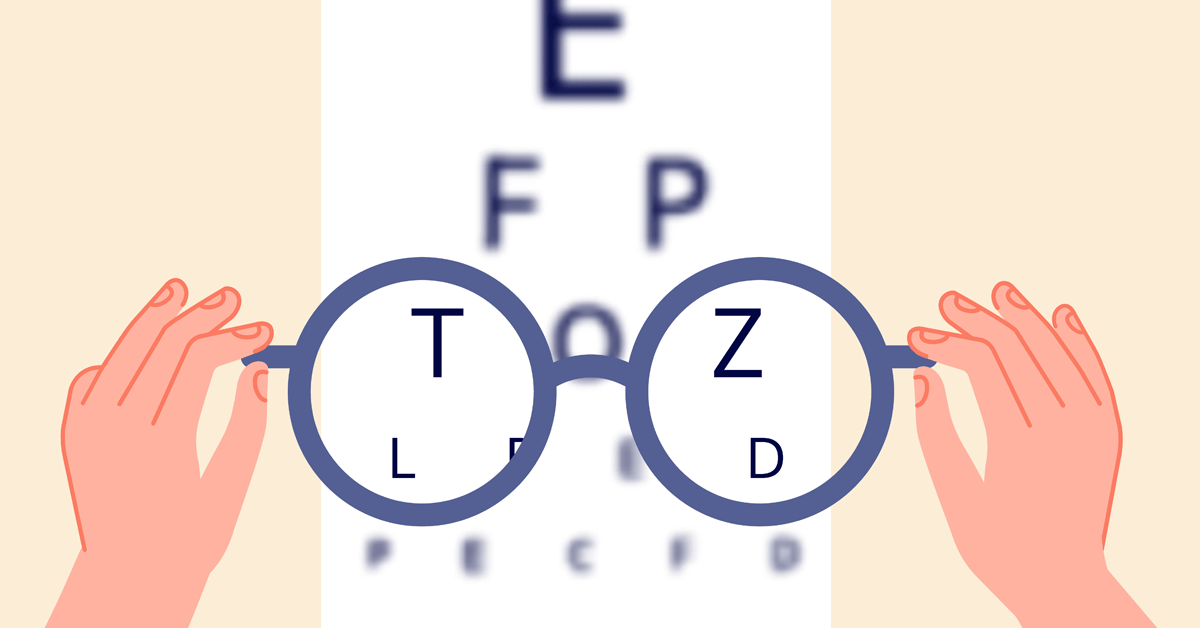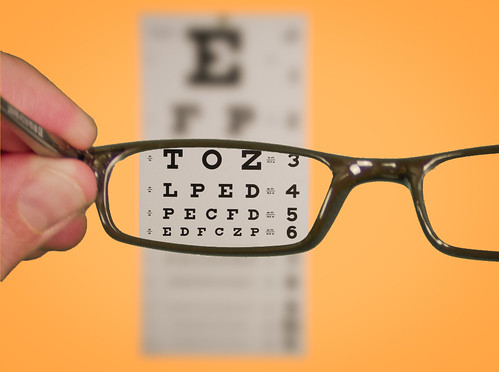
Getting a yearly eye exam can help you spot symptoms early, find the right eye prescription, and diagnose specific eye conditions. At Northeastern Eye Institute, we’re ready to help you maintain your eye health. Knowing what to expect during your examination can help you feel more comfortable and secure. And, of course, our team of highly trained eye doctors and eye professionals is ready to answer questions you might have about the process.
So, read on to learn more about eye exams and, when you’re ready, call us to schedule an appointment at one of our 15 regional offices. We’re looking forward to seeing you.
What To Expect During a Standard Eye Exam

Photo via Flickr by kenteegardin Licensed CC BY-SA 2.0
When you come in for an eye exam, there are a few processes and tests we like our patients to go through. These processes help us assess your current eye health to determine your correct prescription or specific eye needs. We typically follow three steps in our exams, though yours may be tailored to match your specific concerns or eye status.
Introduction
The first step in your general eye exam is a review of your history and a discussion of the reason for your visit. This helps us get to know your history and learn about any concerns you may have regarding your eye health. We compile information on your historical visual record and listen carefully to learn about specific worries or matters you’d like us to address during your visit. The information we collect in this stage helps ensure we build a foundation of trust and support for our patients while simultaneously providing a personalized eye examination that meets your unique needs.
Testing
The next phase of a general eye exam involves performing various tests to assess the current condition of your eyes and to discover your prescription needs if you have them. Here’s a closer look at some tests we perform during a general eye exam:
- Visual acuity test: Our visual acuity test is probably the one you’re most familiar with. We ask patients to read letters on a Snellen chart so we can assess their visual ability.
- Pupil response test: For this test, we use a flashlight to measure your pupil’s dilation and constriction. This helps ensure your eyes respond appropriately to light stimulation.
- Lensometer test: A lensometer is an instrument we use to determine your correct eyeglass or contact prescription. The technology can also reveal how best to mount your lenses for the proper orientation and marking.
- Slit lamp test: The slit lamp allows us to look at your cornea’s external structure. Your cornea is a transparent eye layer that controls the amount of light entering your eye.
- Tonometry test: This test is a diagnostic test that helps us measure the amount of fluid pressure inside your eye. For patients with glaucoma or those at risk for glaucoma, this exam can be especially useful.
- Ophthalmoscopy: An ophthalmoscopy is a test we perform to look at your eyes’ internal structure. It helps us examine things like the nerve function, retinal tissue, and blood vessels in your eye.
- Visual pathway test: We also measure your visual field, checking for blind spots and measuring your ability to see out of the periphery of your eyes.
- Peripheral test: Using dilation drops and an indirect ophthalmoscope, we look at your eyes’ peripheral abilities. These drops can make your vision blurry, so be sure to have someone you trust accompany you to your appointment and help you home.
Review
After completing these tests, your eye doctor reviews your results and talks to you about the next steps. We can talk to you about conditions like astigmatism, presbyopia, and glaucoma, along with common eye concerns like nearsightedness and farsightedness. From here, you can get the prescription that’s right for you or talk to your doctor about a longer-term care plan to ensure your continued eye health.
What Gets Tested or Measured During an Eye Exam?
The tests we perform during an eye exam help us gauge your eye function and health successfully. It’s important for us to look at many aspects of your eye structure and visual abilities during these exams so we can accurately assess your eye needs. If you have questions, you can always call us for more specific information or formal medical advice.
Here’s a closer look at what we test and measure during exams:
- Visual acuity
- Pupil response
- Prescription needs
- Structure of the eye
- Intraocular pressure
- Retinal tissue
- Nerve function
- Blood vessels
- Visual pathway neurological function
- Peripheral vision
How Can You Prepare for an Eye Exam?
Here are some steps you can take to prepare for your eye exam:
- Make an appointment: You can make an appointment with us anytime. We have 15 convenient locations and over 30 experienced eye doctors ready to help you with all your eye care needs.
- Locate your I.D. and insurance information: Ensure you bring your identification card and insurance card with you to your visit. Here’s some more information about the insurance providers we accept at Northeastern Eye Institute.
- Compile your questions: Come prepared with your questions and information about your family’s medical and eye history. This can help us ensure we understand your history and can respond to all your questions during your visit.
- Browse frames: If you’re coming to see us for an eyeglasses prescription, browse some frame styles to get an idea of what you like. We have many name-brand frames available to help you find a unique style that makes you feel confident.
- Arrange a ride: Our doctors may use special eye drops during your examination to dilate your pupils and measure your peripheral vision. Your pupils can take some time to return to normal, usually about four to six hours, so be sure to have a ride home arranged in advance.
Hopefully, this answered some of your questions about the eye exam process. If you have specific concerns or inquiries about your exam, we’re happy to answer them for you. We offer a long list of eye care services and are here to help with all your eye care needs.